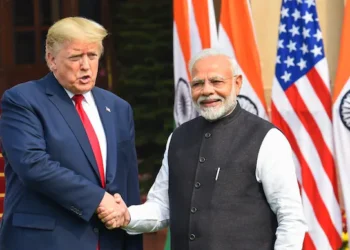Prime Minister Narendra Modi is set to inaugurate two new indigenously developed reactors at the Kakrapar Atomic Power Plant in Gujarat on 22nd February, as reported by Indian Express. Situated approximately 80 km from Surat, Kakrapar will witness the launch of units 3 and 4, which are the first two in a series of sixteen indigenous Pressurised Heavy Water Reactors (PHWR) of 700 MW each being set up across the country.
These pressurized heavy water reactors utilize natural uranium as fuel and heavy water as coolant and moderator. While the Nuclear Power Corporation of India Limited (NPCIL), a public sector enterprise under the Department of Atomic Energy, has been responsible for designing, constructing, commissioning, and operating these reactors, the supply of equipment and execution of contracts have been handled by Indian industries and companies, showcasing the essence of Make in India.

Also Read – PM Modi To Inaugurate Strategically Important Sela Tunnel in Arunachal Pradesh
What is Karapar Atomic Power Station?
Kakrapar Atomic Power Station (KAPS) has been operational since 1993, with two units generating 220 MW each. The new units, 3 and 4, have been constructed adjacent to the existing ones. Unit 3 of the Kakrapar Atomic Power Project (KAPP-3) commenced operations at total capacity on 31st August last year.
Unit 4 achieved a significant milestone by achieving criticality (start of controlled fission chain reaction) for the first time on 17th December 2023. It is expected to reach full power soon.
Also Read – AIIMS Rewari, Gurugram Metro Expansion and Mahabharat Museum: PM Modi’s Gift To Haryana
What is the Power Production Capacity of KAPP-3?
Once both new units are operational, the total power production capacity of the Kakrapar plant will rise to 1,440 MW. Currently, NPCIL operates 23 reactors totaling 7,480 MW, comprising 19 PWHR reactors, 2 Boiling Water Reactors (BWR), and 2 Pressurized Water Reactors (PWRs).

Additionally, NPCIL is constructing nine more units, including KAPP-4, adding up to 7,500 MW in capacity. Ten additional reactors, with a combined capacity of 7,000 MW, are in pre-project stages and are expected to be completed by 2031-32.
The launch of the two units at Kakrapar signifies a significant milestone in the commercial evolution of domestically developed PHWR technology. The unit capacity of PHWRs has progressed from 220 MW to 540 MW and now to 700 MW, highlighting India’s advancement in nuclear power technology with near-complete indigenous content.













